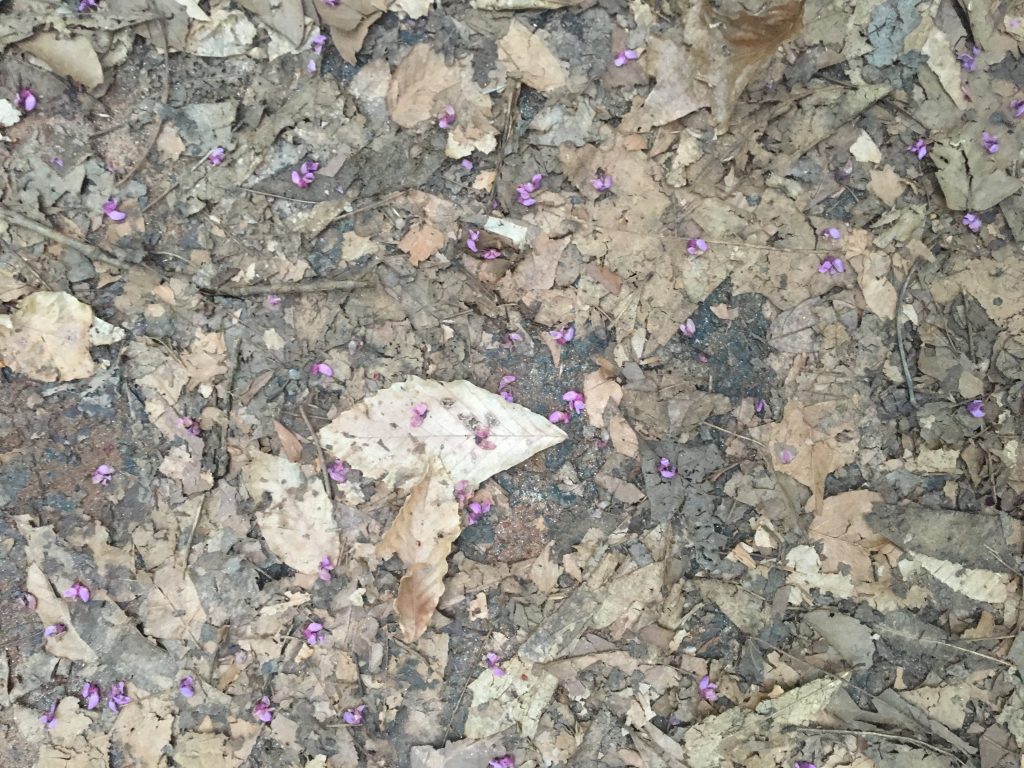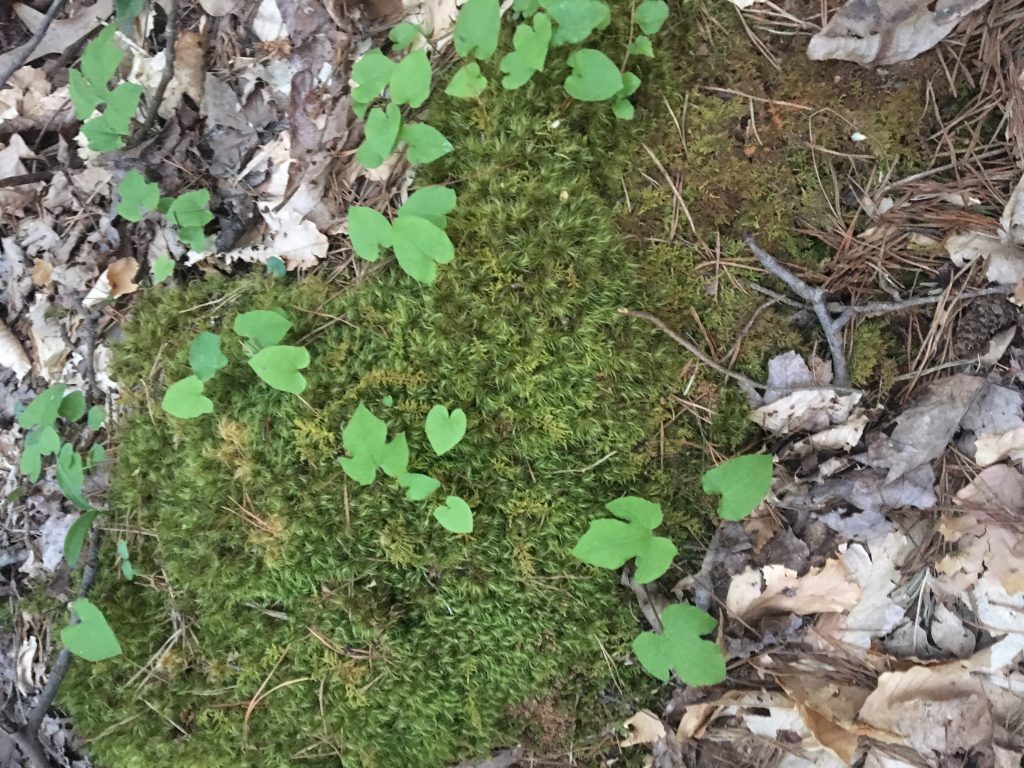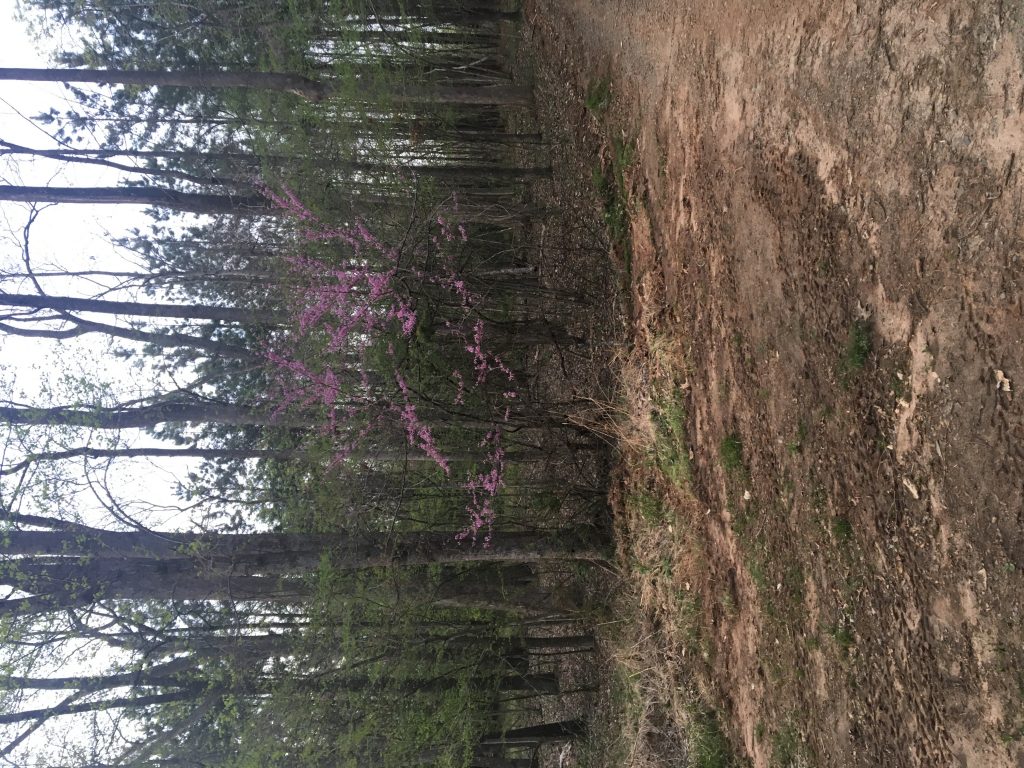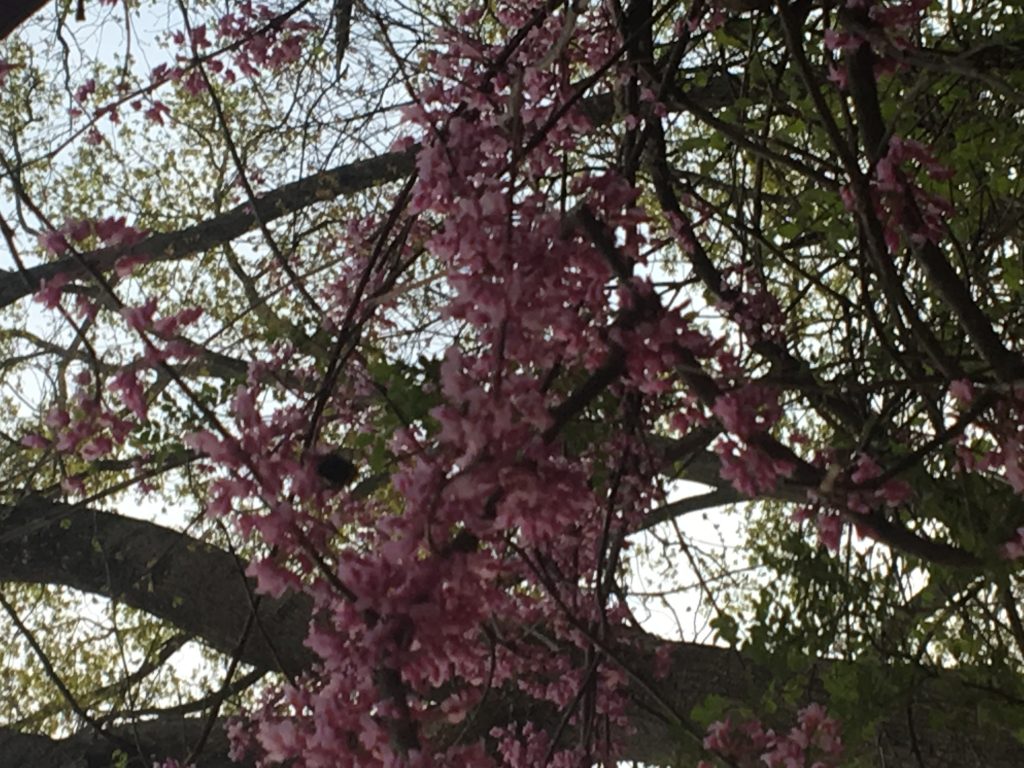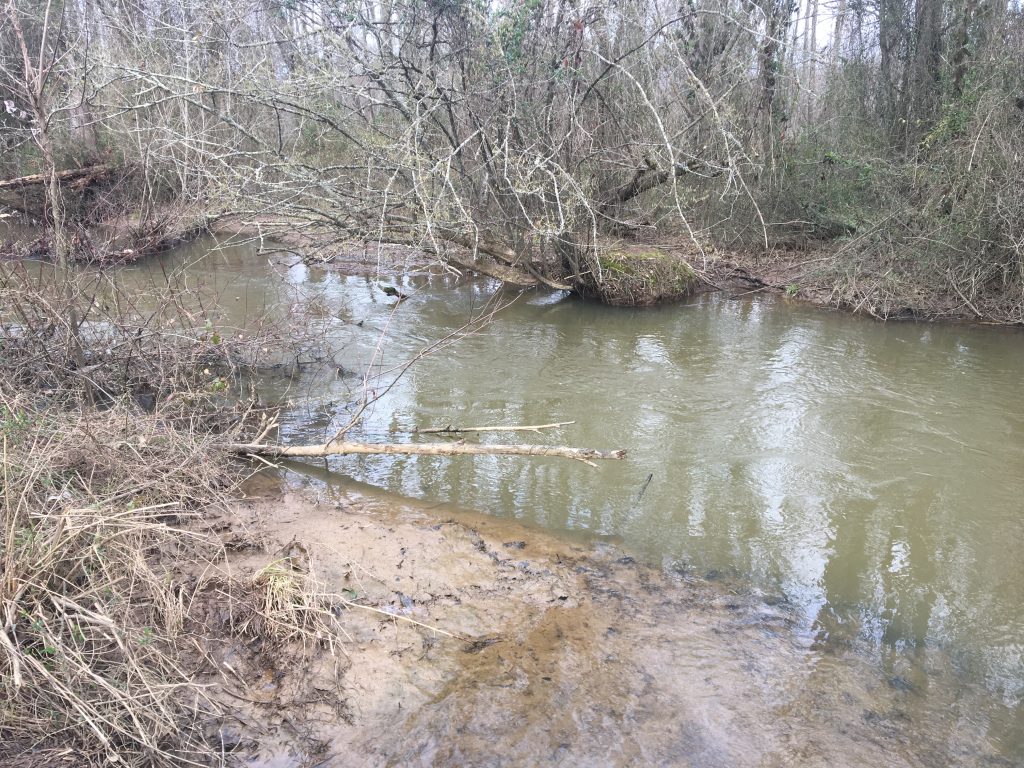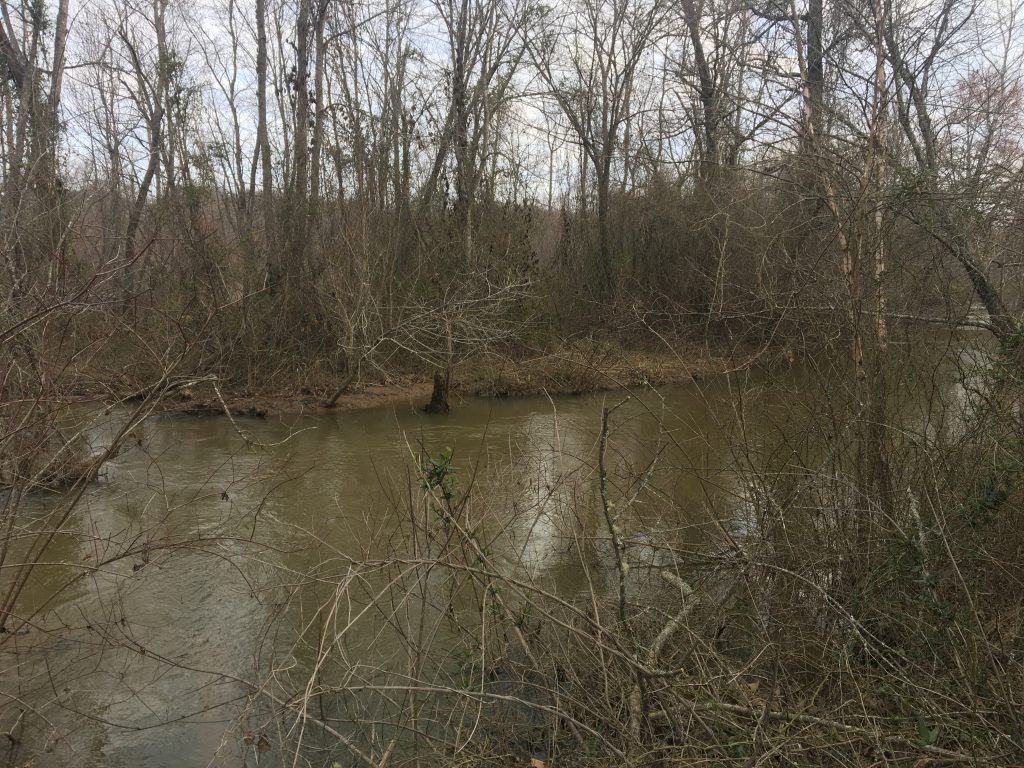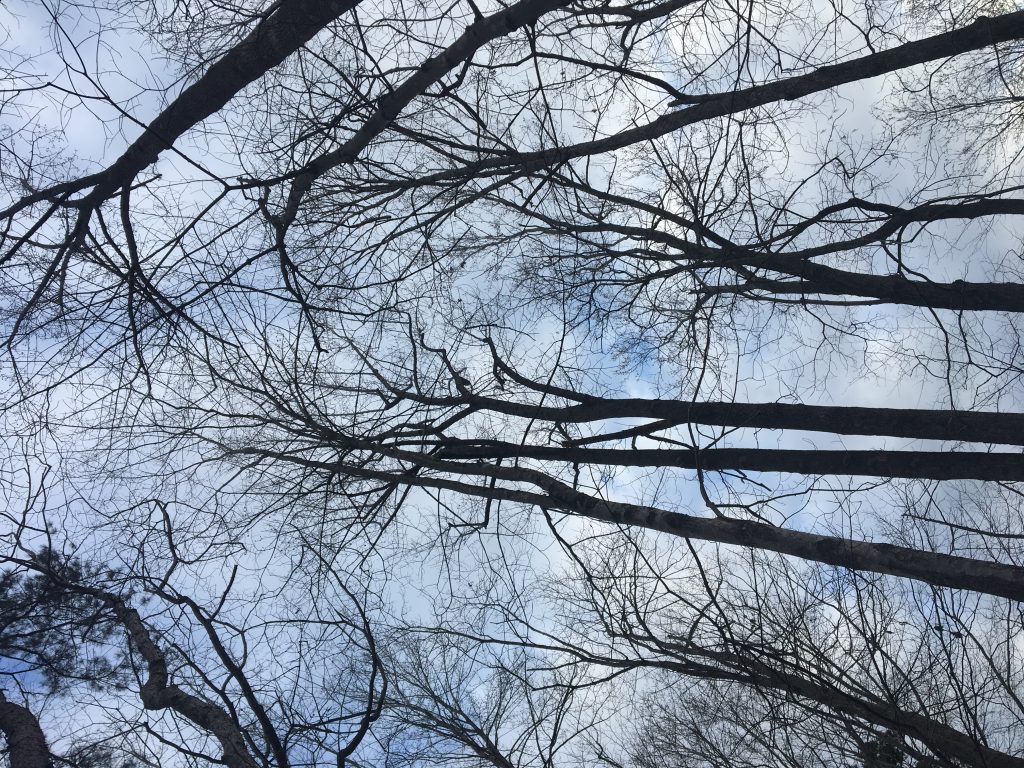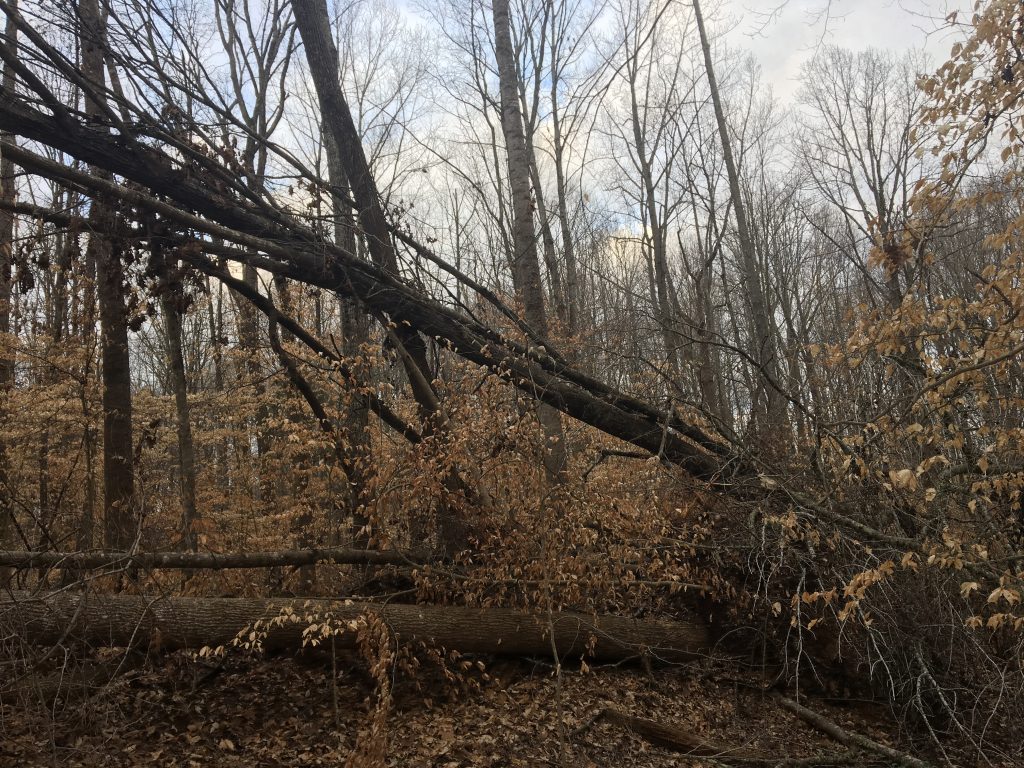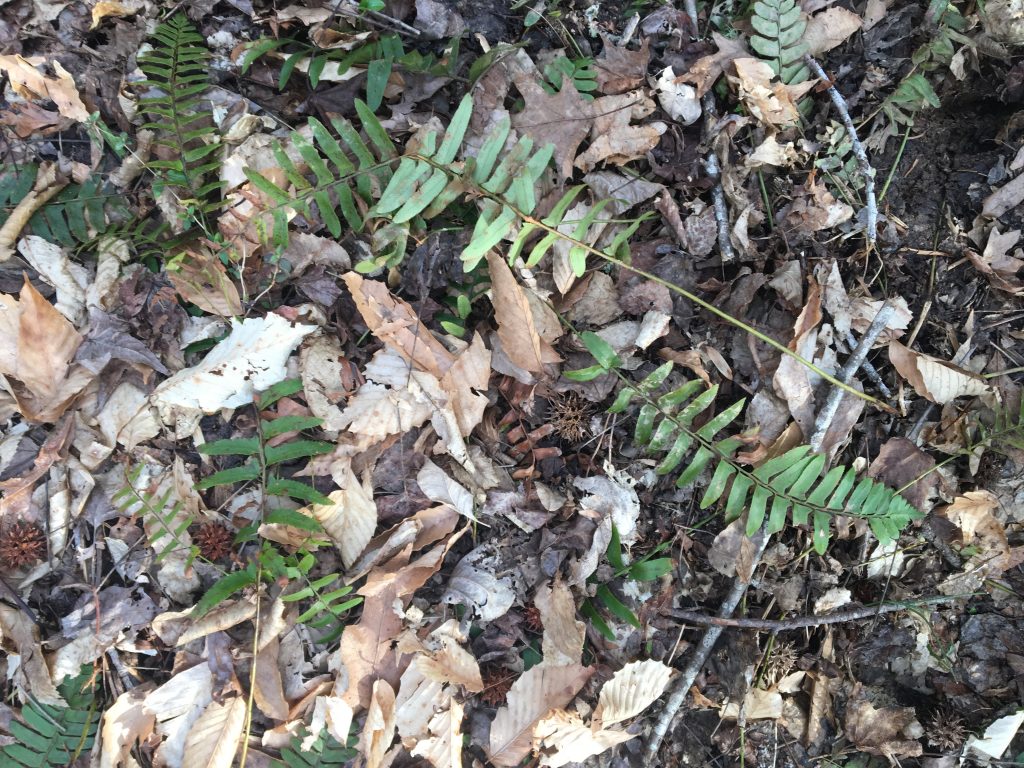Hello and welcome back to my blog. This will be my last blog post for this class, but I hope to continue to visit the park, even after this class ends. For this last blog post, I hope to finish reflecting on my most recent visit to Haw River State Park and then reflect on my experience as a whole, with this particular project and with this class.
Continuing on my trek along the Piedmont Loop Trail, I walk along the guided path before coming upon a tree. The tree was right in front of me. Literally. It laid across the trail so perfectly, like it was just lying down to take a quick nap. I suppose the tree had been there for a while, but I also wondered why it had not been moved out of the way of the trail. I mean, it was a pretty grand impediment that caused you to stray from the original path and follow a new, less-traveled one. Has any visitor told anyone about this tree? Would this be considered a safety hazard? Has the administration at Haw River State Park just decided to not do anything about it? As I look at this tree, thousands of questions pop into my head all at the same time. Then I pause, and remember again the true purpose of nature. It’s not here to please us or to be the perfect path to get us from one spot to another. It is here to provide us with necessities, such as water and oxygen. Occasionally, nature creates exquisite scenes that are interesting to capture and photograph, so we can look back at the pictures and always appreciate nature for all that it is.

After this minor inconvenience, I carry on with my walk around the park. Most of the time, everything looks the same. There are similar looking trees with similar looking leaves and I hear the same chorus of birds and grasshoppers come together. But occasionally I see a different tree, like this one I discovered with some interesting leaves that point downwards (I searched a while for the name of the tree but just could not find it). And I also see different colored trees. Aside from the typical green trees and the surprising redbud I found earlier, I also stumbled upon a white tree, which I later discovered was a flowering dogwood, a Cornus florida. Once again, I was drawn to this unique tree and took another opportunity to appreciate the diversity of nature. I was mesmerized by the change of this park over the 3 short months I have been visiting.
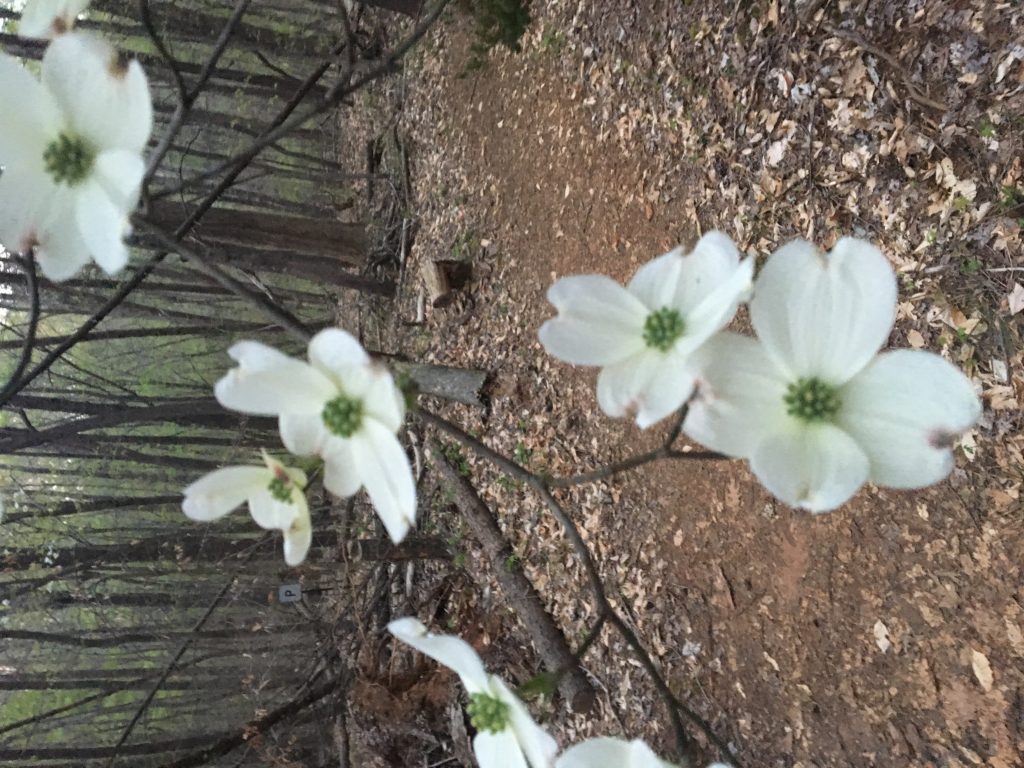
At the beginning of this project, I did not know what to expect. But now, I am pleasantly surprised by how much I have grown and how much I have learned about myself and about nature. I now have a greater appreciation for nature and all that it provides for us. This is the first time in a while that I have felt a strong connection to nature. Being on a campus like Guilford’s, where there are trees and other signs of nature all around, and where we can actually go outside to take it all in, has also helped me notice and appreciate nature more. Thank you, Jim, for challenging me to step outside of my comfort zone and allowing me to grow as a writer. To end this journey, I want to share two pictures, taken 30 minutes apart, from each side of the lake located at Haw River State Park. They show just how important perspective is and that sometimes you just need to look at things from a different point of view:)

A view of one side of the lake during the evening 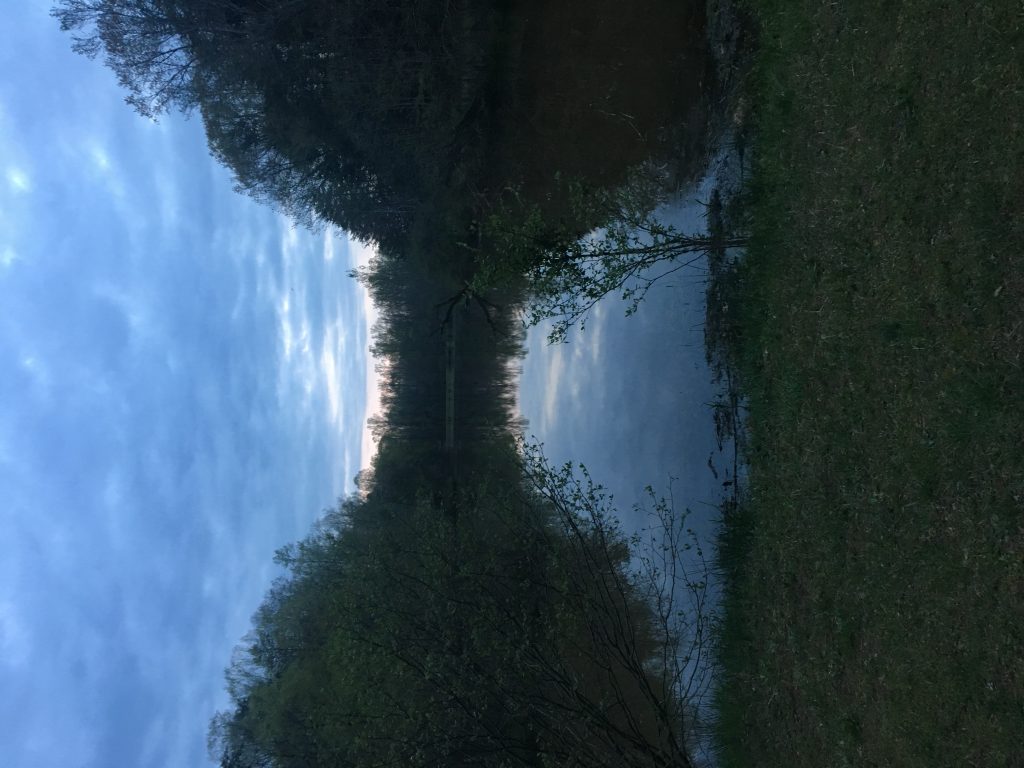
A photo taken less than 30 minutes later, after sunset, from the other side of the lake.
p.s. I tried to rotate these photos but I could not figure out how to do it without uploading everyone else’s pictures as well. I apologize in advance.
